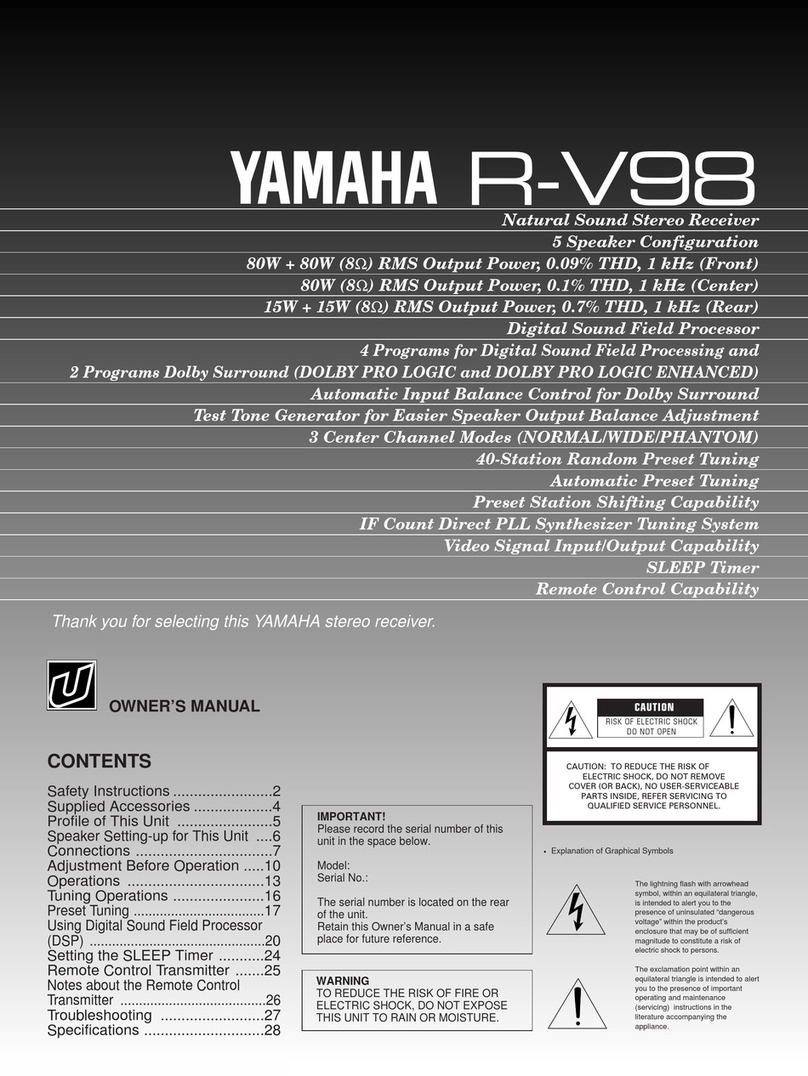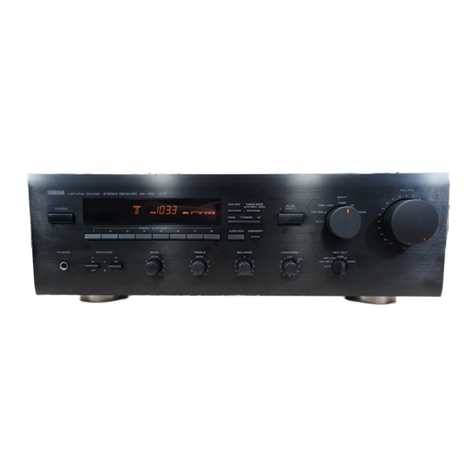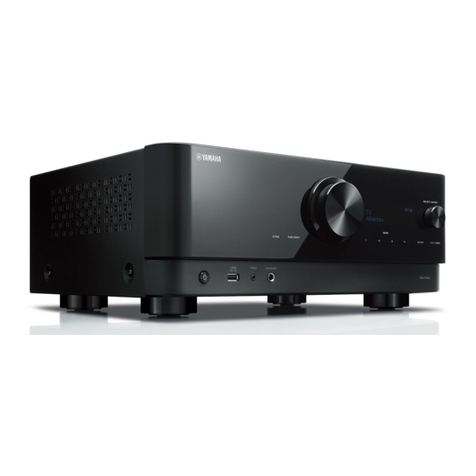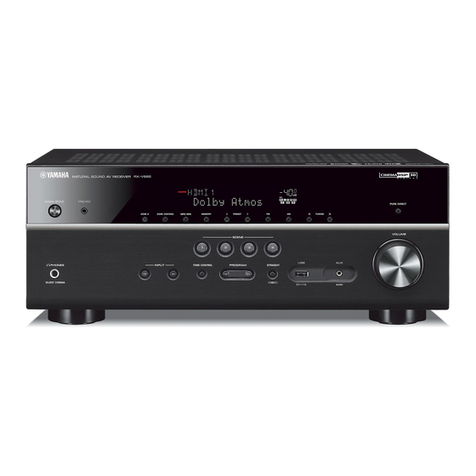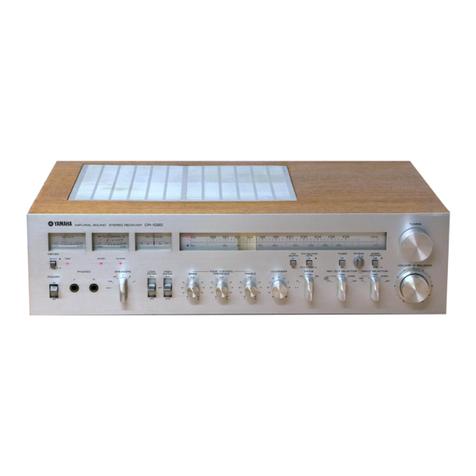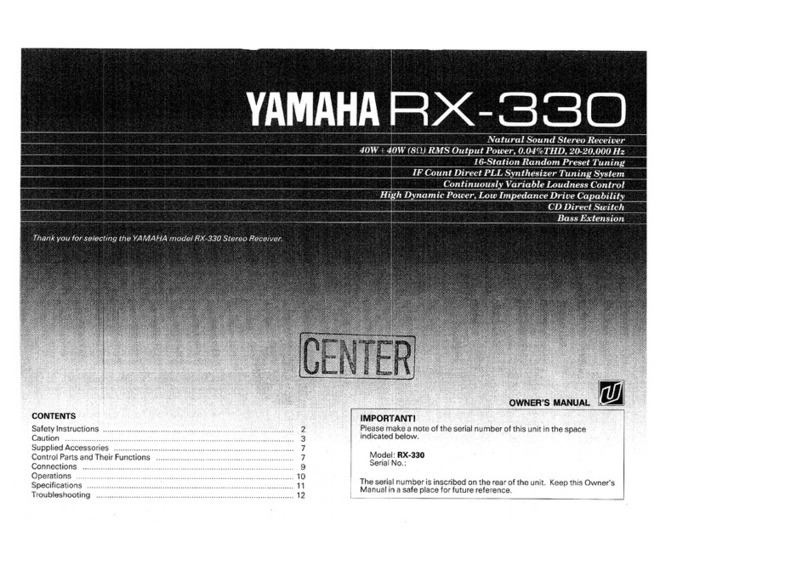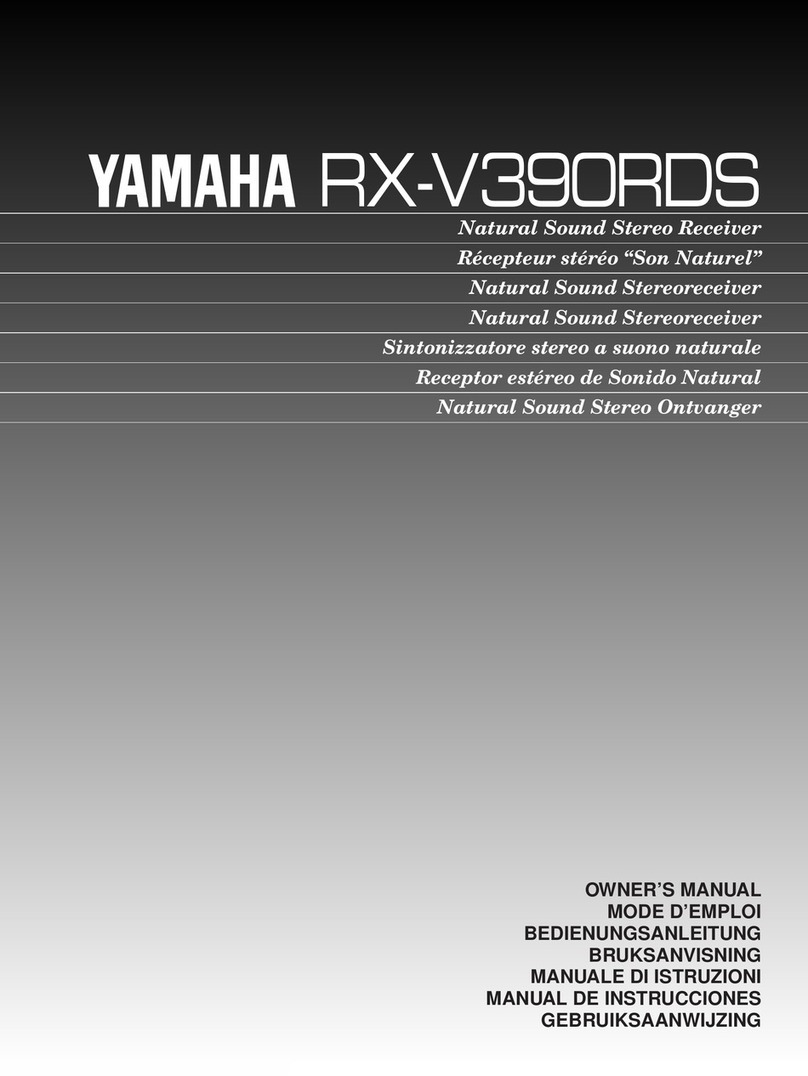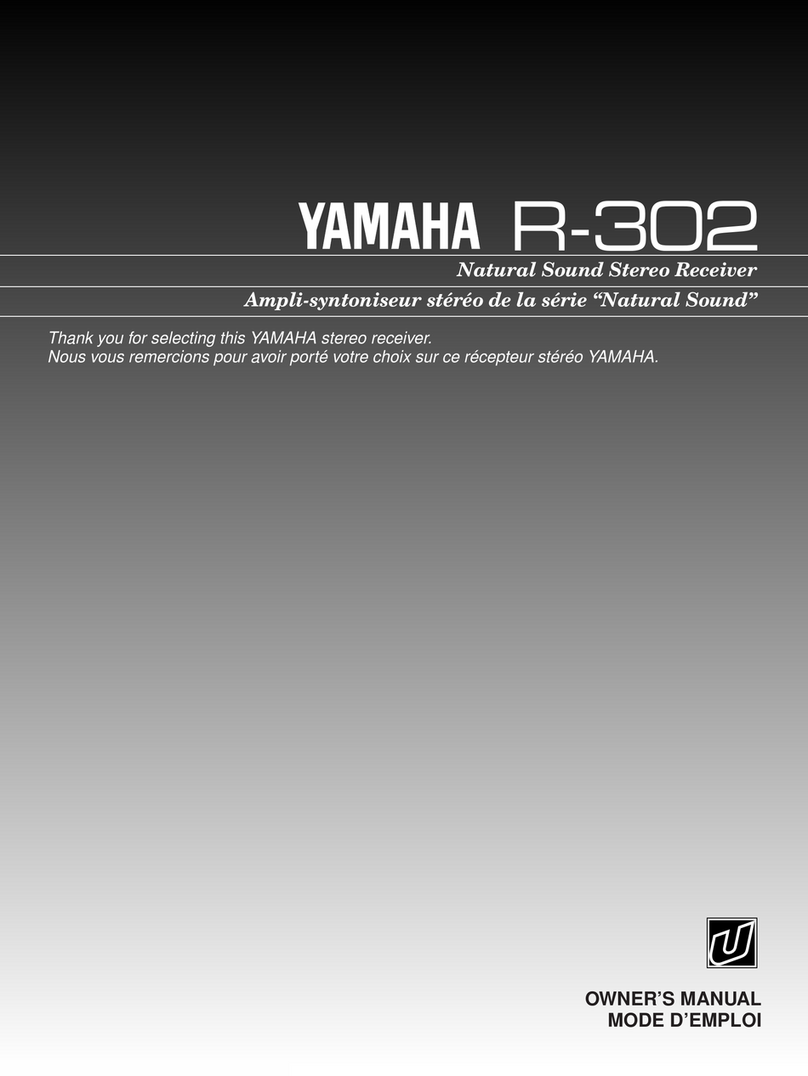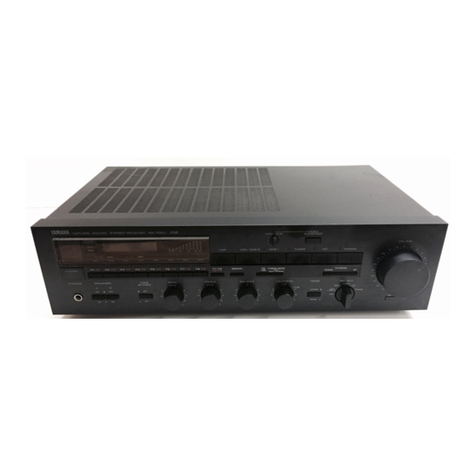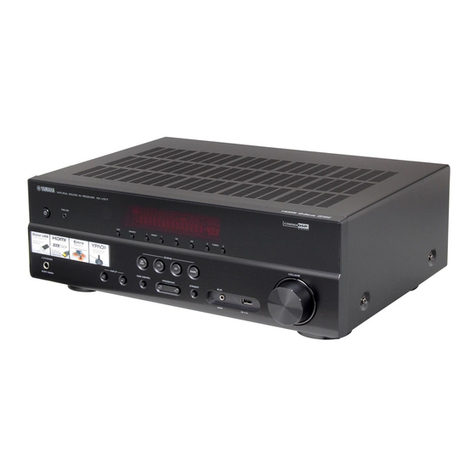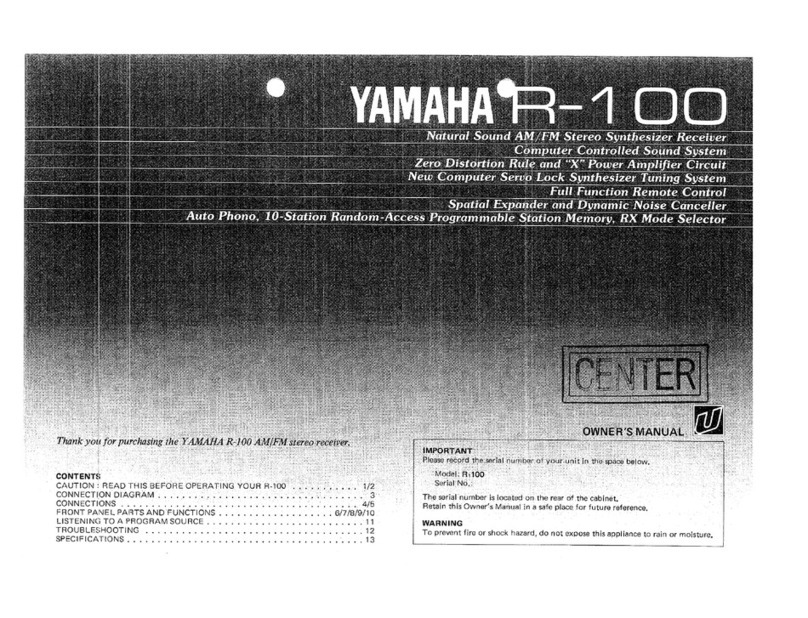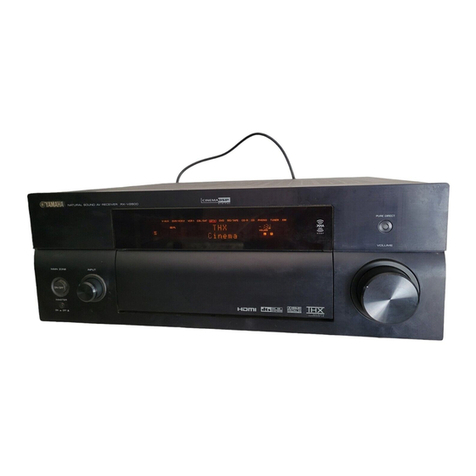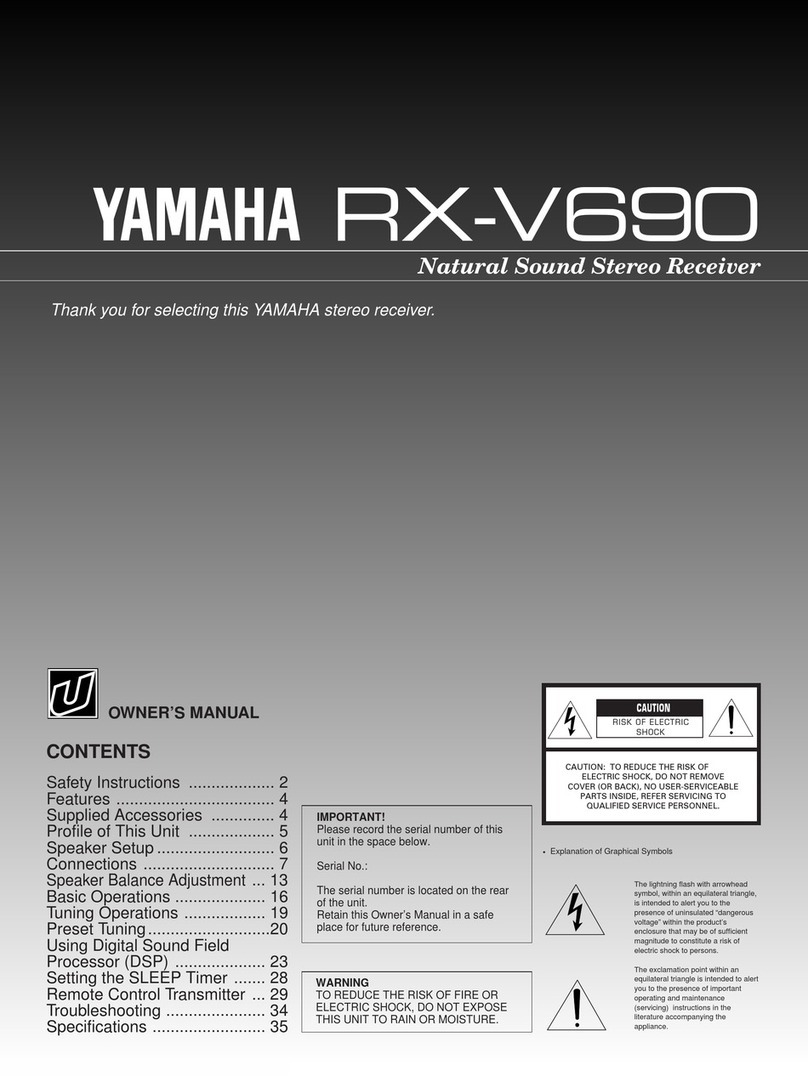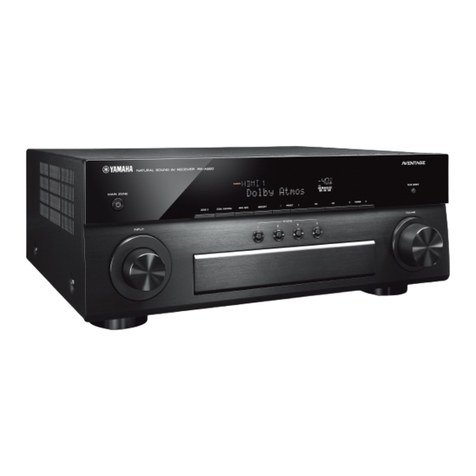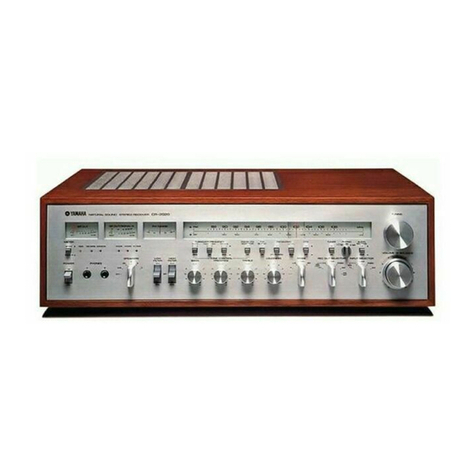
CAUTION
RISKOFELECTRICSHOCK
,DONOTOPEN
CAUTION: TO REDUCE THE RISK OF
ELECTRIC SHOCK, DO NOT REMOVE
COVER (OR BACK). NO USER-SERVICEABLE
PARTS INSIDE. REFER SERVICING TO
QUALIFIED SERVICE PERSONNEL.
• Explanation of Graphical Symbols
Thelightning flash with arrowhead symbol,within an
equilateral triangle, is intendedm alert you to the
presence of uninsulaled "dangerous vohage" wilhin
the product's enclosure thai may be of sut]iciem
magnitude to constitutea risk of eleclric shock 1()
persolls,
The exclamation point within an equilateral triangle
is intended to alert you to tile presence of important
operating and mainmnancc/_lwicing) instructions in
the literature accompanying the appliance.
1 Read Instructions All the safety and operating instructions
should be read before the product is operated.
2 Retain Instructions The safety and operating instructions
should be retained for luture rel-ereuce.
3Heed Warnings All warnings on the product and in the
operating instructions should be adhered to.
4Follow Instructions All operating and use instructions
should be lk)llowed.
5 Cleaning Unplug this product li+(]mthe wall outlet belk_re
cleaning. Do not use liquid cleaners or aerosol cleaners.
6 Attachments Do not use attachments not recommended by
the product manulhcmrer as they may cause hazards.
7 Water and Moisture Do not use this product near water
for example, near a bath tub. wash bowl. kitchen sink. or
hmudry tub: in a wet basement: or near a swimming pool:
and the like.
8 Accessories Do not place this product on an unstable cart.
stand, tripod, bracket, or table. The product may fall.
causing serious it]iury to a child or adult, and serious
dmuage to the product. Use only with a cart. stand, tripod,
bracket, or table recommended by the manulhcturer, or sold
with the product. Any mounting of the product should
follow the manulhcturer's instructions, and should use a
mounting accessory recommeuded by the manufacturer.
9 A product and cart combination should be moved with care.
Quick stops, excessive lbrce, and uneven surlaces may
cause the product and cart combination to
overturn.
10 Ventilation Slots and openings in the cabinet are provided
lot ventilation and to ensure reliable operation of the
product and to protect it from overheating, and these
openings must not be blocked or covered. The openings
should never be blocked by placing the product on a bed.
solid, rug, or other similar surface. This product should not
be placed in a builtdn installation such as a bookcase or rack
unless proper ventilation is provided or the manufacturer's
instructions hme been adhered to.
11 Power Sources This product should be operated only from
the type of power source indicated on the marking label. If
you are not sure of the type of power supply to your home,
consult your product dealer or local power company. For
products intended to operate from battery power, or other
sources, refer to the operating instructions.
12 Grounding or Polarization This product may be equipped
with a polarized alternating current line phtg (a plug ha'dug
one blade wider than the other). This plug will lit into the
power outlet only one way. This is a safety feature. If you
are unable to insert the plug fully into the outlet, try
reversing the plug. If the plug should still fail to lit. contact
your electrician to replace your obsolete outlet. Do not
defeat the safety purpose of the polarized plug.
13 Power-Cord Protection Power-supply cords should be
routed so that they are not likely to be walked on or pinched
by items placed upon or against them, paying particular
attention to cords at plugs, convenience receptacles, and the
point where they exit from the product.
14 Lightning For added protection lot this product during a
lightning storm, or when it is left unattended and unused lk)r
long periods of time. unphtg it from the wall outlet and
disconnect the antenna or cable system. This will prevent
damage to the product due to lightning and power-line
surges.
1S Power Lines An outside antenna system should not he
located in the vicinity of overhead power lines or other
electric light or power circuits, or where it can fall into such
power lines or circuits. When installing an outside autmma
system, extreme cltre should be taken to keep from touching
such power lines or circuits as contact with them might be
latah
16 Overloading Do not overload wall outlets, extension
cords, or integral convenience receptacles as this can result
in a risk of fire or electric shock.
17 Ot)ject and Liquid Entry Never push objects of any kind
into this product through openings as they may touch
dangerous voltage points or short-out parts that could result
in a fire or electric shock. Never spill liquid of any kind on
the product.
18 Servicing Do not attempt to service this product yourself
as opening or removing covers may expose you to
dangerous voltage or other hazards. Reli:r all servicing to
qualified service personneh
19 Damage Requiring Service Unplug this product from the
wall outlet and reli:r servicing to qualified service personnel
under the lollowiug conditions:
a) When the power-supply cord or plug is damaged,
b) If liquid hits been spilled, or objects haxe fallen into the
product.
c) If the product hits been exposed to rain or water.
